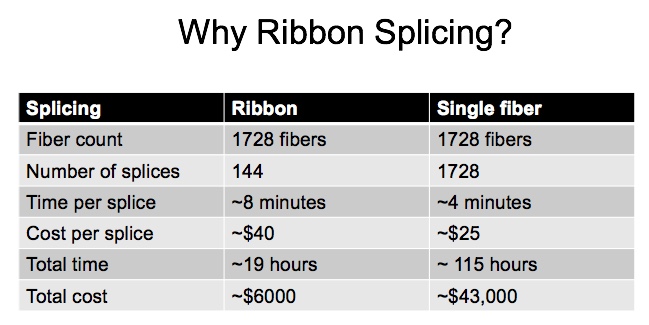


However, they also use mechanical splicing for shorter, local cable runs. Many companies now invest fusion for networks, especially for long haul single-mode networks. The more precise you need the alignment (better alignment results in lower loss) the more you pay for the machine. While the cost per splice for fusion splicing is lower ($0.50-$1.50 each), the initial investment is much higher ($15,000-$50,000 depending on the accuracy and features of the fusion splicing machine being purchased). Materials 24-fiber 62.5/125um OFNR cable, termination materials (48 each) 3,547 2. However, with fusion splicing, the fibers generally have a loss of 0.1dB and the fiber splices are usually stronger.Ĭost:mechanical splicing has a low initial investment ($1,000-$2,000) but costs more per splice ($12-$40 each). :: Cost Comparison between ABF and Conventional Fiber Cables 1. The high cost of construction is a barrier to entry. Performance: with mechanical splicing, the fibers usually have loss of 0.3dB. The construction of fiber optic communications cables is a costly, complex, and time consuming process. However, fusion splicing is more skilled and need more time to be finished. Time Requested: mechanical splicing is fast and effective, which is suitable for some emergency situations. Mechanical splicing-the completed mechanical splice provides its own protection for the splice. The index matching gel inside the mechanical splice apparatus will help couple the light from one fiber end to the other.įusion splicing-using heat shrink tubing, silicone gel and/or mechanical crimp protectors will keep the splice protected from outside elements and breakage. Simply position the fiber ends together inside the mechanical splice unit. Follow these best practices for planning, preparing, executing, and testing your fiber optic cable installation.
Splice fiber optic cable cost how to#
Mechanical splicing does not need heating. Learn how to install and splice fiber optic cables for high-speed data transmission. Once properly aligned the fusion splicer unit then uses an electrical arc to melt the fibers, permanently welding the two fiber ends together. Step four: after cleaning the fiber, the connecting step starts.įor fusion splicing, fusing fiber contains alignment and heating.As to mechanical, the cleaving process is identical to the cleaving for fusion splicing but the cleave precision is not as critical. The cleaved end for fusion splicing must be mirror-smooth and perpendicular to the fiber axis to obtain a proper splice. Step two: cleave the fiber with a fiber optic cleaver.Step one: strip the protective coatings, jackets, tubes, strength members, etc.Process: The first three steps of mechanical splicing and fusion splicing before connecting the fibers ends are generally the same. The different fiber splicing methods perform the same function: to repair or alter fiber optic cables.


 0 kommentar(er)
0 kommentar(er)
